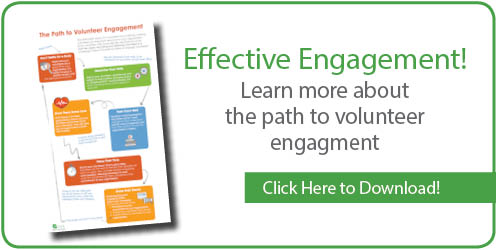 Volunteerism is essential to effective day-to-day operations for many non-profit organizations, providing them with assistance and expertise that organizations with limited resources may otherwise be unable to obtain on their own. In other words, the time, labor and skills that volunteers contribute to these organizations help them do more with less, providing them the means to better serve their communities. However, reaping those benefits depends on the ability to attract and retain the volunteers your organization needs. Here we'll outline some key points related to volunteer management that can help in your efforts at doing so.
Volunteerism is essential to effective day-to-day operations for many non-profit organizations, providing them with assistance and expertise that organizations with limited resources may otherwise be unable to obtain on their own. In other words, the time, labor and skills that volunteers contribute to these organizations help them do more with less, providing them the means to better serve their communities. However, reaping those benefits depends on the ability to attract and retain the volunteers your organization needs. Here we'll outline some key points related to volunteer management that can help in your efforts at doing so.
Attracting volunteers to your organization means marketing your mission and opportunities to the pool of potential volunteers in your area. Effective marketing begins with knowing who your targets – in this case, potential volunteers – are and what motivates them.
Who volunteers? According to figures compiled by the Bureau of Labor Statistics, 24.9 percent of Americans volunteered between September 2014 and September 2015. Women volunteered more often than men, with 27.8 percent of women donating their time, as opposed to 21.8 percent of men. Individuals ranging in age from 35 to 44 and 45 to 54 volunteered in larger numbers than those of other age groups, coming in at 28.9 percent and 28.0 percent, respectively. Teens, ages 16 to 19, were more likely to volunteer than young adults between the ages of 20 and 24, with 26.4 percent of teens volunteering as compared to 18.4 percent of young adults. Married people had higher rates of volunteerism (29.9 percent) than individuals who never married (19.9 percent). Other groups with higher volunteer rates included parents with children under the age of 18 (31.3 percent), employed individuals – especially part-time workers – and people with higher levels of education.
Why Do People Volunteer? A study done by Australian researchers sought to answer that question, dividing volunteers into groups according to self-reported motivations. According to study authors, 20 percent of volunteers are primarily motivated by the opportunity to help others, while 15 percent are motivated by three primary factors: personal satisfaction, doing something worthwhile and helping others. 10 percent listed their primary motivations as follows: personal satisfaction, doing something worthwhile, helping others, social contact, to be active and to put skills and experience to use. 21 percent of volunteers were motivated by a family member or friend involved with a particular organization or cause. Finally, 16 percent of volunteers were motivated by feelings of obligation and/or the desire to gain work experience and skills.
Older adults, age 44 and over, are most likely to be motivated by a desire to help others, stay active, do something worthwhile, maintain social contact and use skills they have developed over a lifetime, while young adults are more likely to be motivated towards volunteerism as a means to gain work experience and skills, or by a friend or relative within the chosen organization. Married people with young children are most likely to volunteer for organizations that serve children.
So How Do These Facts Affect Recruitment and Volunteer Management?
First, they can help your volunteer coordinator or committee build individual profiles, or personas, of the type of person that would best suit the volunteer opportunities you have on offer. Doing so avoids a mistake common to many organizations – operating on the assumption that volunteers are similar, regardless of demographic or motivational differences – and helps create a more targeted and efficient recruitment process. Forming an accurate appraisal of the type of volunteers you need also helps in managing volunteers more effectively, increasing your odds of placing recruits in positions suit their personal motivations for donating their time, keeping them more engaged and satisfied for increased volunteer retention.
For instance, for the heath-related non-profit that needs volunteers to fill positions that involve fundraising, management, information technology, and operations, targeting recruitment efforts towards the well-educated middle-aged or older adult population is wise, since this demographic is often motivated by the desire to put their skills and experience to work for their community. If filling community volunteer positions is your goal, such as home visits or daily meal deliveries to seniors, volunteers of or approaching retirement age are often your best bet, since they tend to be motivated by the desire to help others and remain active. They also typically devote more hours to volunteerism than the average person are more likely to remain in volunteer positions long-term.
The basic take-away for non-profits who wish to improve volunteer recruitment and retention is that solid volunteer management must be a priority. Given the potential benefits of an efficient, effective volunteer force to your organization, matching the right person to the right opportunity is just as important in your volunteer work force as it is for paid employees.











